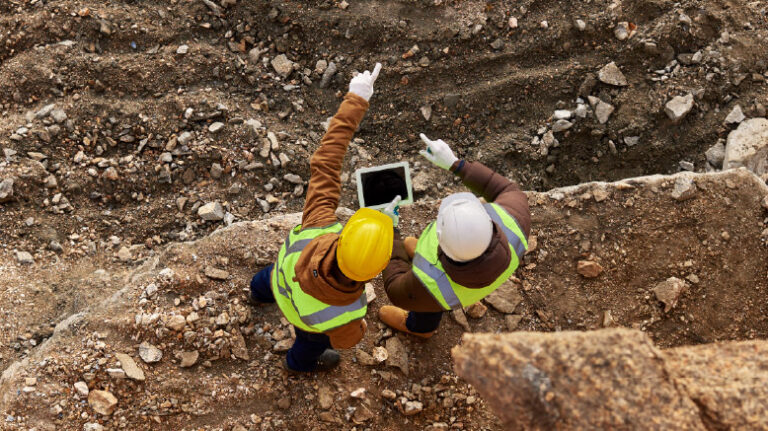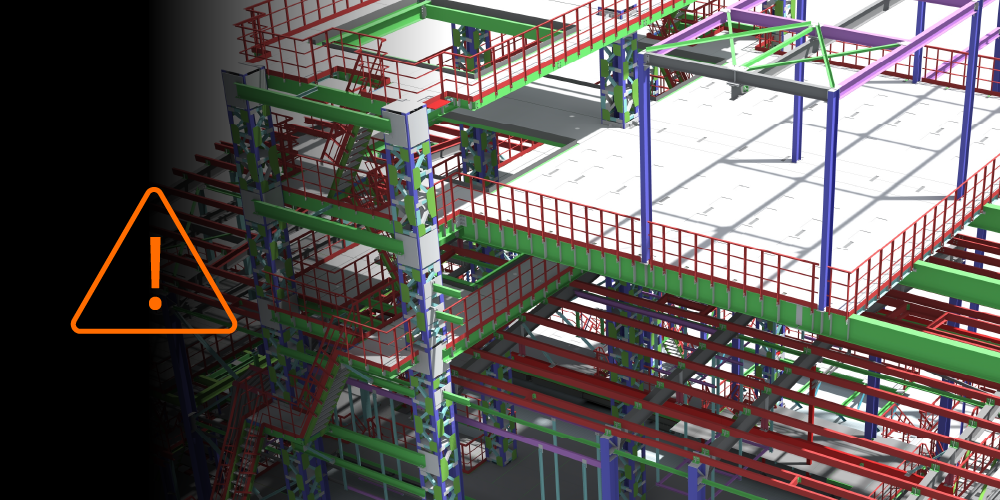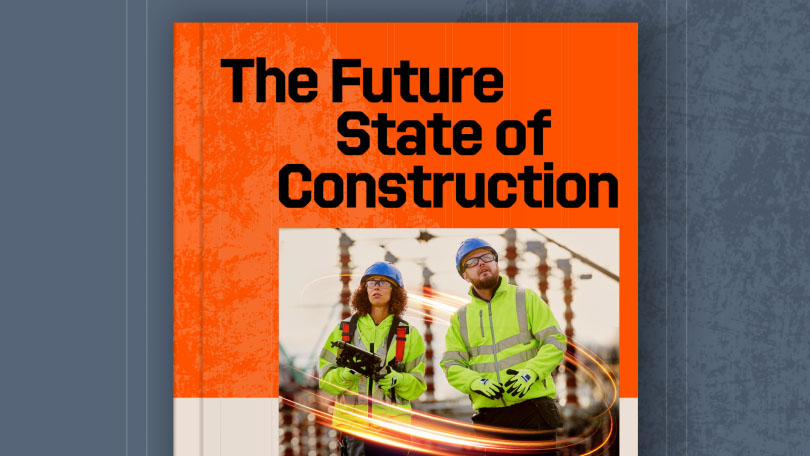Related Articles
— 6 min read
How Civil Construction Can Build a Culture of True Tech Readiness


Last Updated Sep 10, 2025

Annabel Davis
Before joining the world of construction technology, Annabel worked as a Project Engineer across major infrastructure projects in Australia, New Zealand, and the UK. Her experience on site—often drive-in-drive-out or fly-in-fly-out—spanned large-scale rail, road, and marine works. Annabel holds a BEng (Civil, Structural) and BCom (Economics) from USYD and brings her practical, hands-on knowledge to her role at Procore, where she has been since 2021. This move was driven by a deep appreciation for the construction community and a desire to leverage engineering expertise in a less transient role, while remaining connected to the industry.

Israel Simmons
Civil & Infrastructure Solutions Specialist
11 articles
Israel Simmons, DBIA, CCM, PMP is a seasoned construction professional with over 12 years of leadership experience delivering over $3 billion in complex civil and infrastructure projects across the U.S. His diverse portfolio spans major freeways, bridges, rail, wastewater treatment plants, aviation, and more. He joined Procore to help transform the construction industry through a unified, integrated platform that streamlines project execution from start to finish. Israel earned a bachelor’s degree in construction management with minors in Business Administration and Communications from Drexel University.
Samantha Nemeny
30 articles
Sam—Samantha if she’s feeling particularly academic—has spent a decade in content marketing, with eight years focused on Australia’s construction industry. She has a knack for making complex ideas easy to understand, turning industry jargon into clear, engaging stories. With a background in SEO and marketing, she’s spent the past three years at Procore, helping industry professionals navigate the world of construction with content that’s both insightful and easy to digest.
Last Updated Sep 10, 2025

While significant investments are pouring into revitalising the nation's infrastructure, the true way to capitalise on this opportunity hinges on more than just funding — it relies on a fundamental shift in how the industry considers and approaches technology.
Being truly ready for technology means more than just buying the latest tools. It requires clear direction, strong internal systems, and a shift in culture and mindset that starts with leadership and flows through the entire organisation.
Table of contents
Starting From The Top
For quite some time, technology adoption in construction has been viewed as a piecemeal investment—a new drone here, a software subscription there. However, genuine readiness means leaders must recognise that technology isn’t just a cost of doing business—it’s the foundation for staying competitive in the future.
True tech readiness starts at the top. It’s about executive leaders recognising that technology is the future of the industry and aligning company goals to embrace it. When a CEO champions new technologies, it sends a clear signal: innovation is a core value, not a passing trend. This top-down commitment inspires staff, fosters a culture of learning, and helps justify the upfront investment needed for long-term gains.
Care about quality often diminishes as you go up the food chain. Junior staff tend to prioritise quality, while senior staff focus more heavily on financial oversight. This upside-down pyramid poses a challenge: if leadership frames technology only as a financial tool, rather than one that drives safety, quality, and innovation, it risks undermining comprehensive tech readiness.

Annabel Davis
Some sectors of civil construction can still operate under a “cowboy culture”, where safety protocols are bypassed for speed and cost savings. Technology can enforce accountability through tools like digital checklists and real-time monitoring, but without leadership driving a cultural shift to prioritise safety and quality, these tools alone will not create lasting change.
People First, Tech Second
Equally important is cultivating a knowledgeable workforce. Technology, like any tool, is only as good as the person wielding it. This requires not just providing access to tools, but creating clear pathways for education and training.
Some leading general contractors have established internal "Centers of Excellence" for data and analytics, and even offer internships, some of which are focused on AI and robotics. These initiatives demonstrate a commitment to upskilling their workforce and embedding technological expertise directly into their operations.
The challenge often lies in bridging the gap for workers who may be less accustomed to extensive digital engagement, requiring intuitive interfaces and hands-on, practical training that resonates with their experience.
For example, transitioning workers across sectors — say from mining to rail or bridge projects — requires careful support, including retraining around new cultural and technical expectations. Highly skilled operators often gain access to advanced equipment such as GPS-enabled machinery, while “low-skill” workers are excluded unless additional ground checks are made. This reinforces that technology must be paired with trust, knowledge, and proper training.
Digital tools can help workers understand “the what and then the why.” For instance, digital access to tolerances can show why a 30-centimetre variance in a trench might be acceptable in a mine but disastrous when installing a toilet. Practical, scenario-based explanations like this ensure that technology not only instructs but also educates.
We need to build a strong knowledge base within our teams, or at least provide clear pathways for them to gain that knowledge. Even for craft workers less accustomed to reading extensively, it's important to cultivate their understanding and ability to use technology effectively.

Israel Simmons
Civil & Infrastructure Solutions Specialist
Procore Technologies
This shift necessitates a change in mindset, particularly embracing the idea that one must "slow down to speed up.
In the schedule-focused world of civil construction, the notion of dedicating more time to pre-construction planning, facilitated by advanced technologies, can feel counterintuitive. However, the meticulous planning enabled by digital tools, such as 3D modeling and sequencing software, allows for an almost granular rehearsal of daily operations before ground is even broken. This detailed foresight can prevent costly rework and delays later, ultimately accelerating project delivery and improving quality.
Integrated Construction Management Platforms
Companies successfully navigating this transformation often use integrated construction management platforms. These platforms provide a centralised digital environment where all project data resides — from initial designs and estimates to daily progress reports and safety checklists.
These systems enable real-time collaboration between disparate teams, whether they're in the office, at the job site, or collaborating remotely. For example, a project manager can instantly access up-to-date drawings, monitor budget variances and track resource allocation from a tablet in the field, eliminating the delays and errors associated with manual updates or fragmented communication channels. This connectivity fosters transparency and accountability, crucial ingredients for a truly tech-ready culture.
Integrated solutions streamline administrative burdens, allowing highly skilled employees to focus on value-added tasks. Imagine no longer spending hours chasing down paper forms or waiting for email updates, but instead instantly receiving critical alerts on their mobile device about material deliveries or equipment status.
This efficiency boosts productivity and contributes to better employee retention. When workers feel more efficient and less bogged down by tedious tasks, their work-life balance improves — which can create a more positive and innovative environment.
Despite the promise of integrated platforms, large parts of the civil sector still lag behind. For many organisations, “digital” remains synonymous with Microsoft Office — spreadsheets, Word, and email — with billion-dollar projects at times managed through a director’s personal Excel file. This fragmented approach leads to version-control issues, hidden risks, and uncertainty around final costs.
True transformation requires moving beyond stopgap tools to systems that actively enforce accountability. Imagine platforms that prompt, “Has this been signed off?”, while creating a visible chain of custody for decisions. By capturing why an out-of-tolerance installation was accepted or documenting the rationale behind a deviation, digital systems embed transparency, accountability, and traceability into everyday operations. The result is not just efficiency, but a cultural shift where technology becomes the safeguard against costly oversights and the driver of smarter, more confident decision-making.
Annabel Davis
Companies that prioritise this culture of digital empowerment find that their employees become more engaged, leading to bolstered domain expertise and a stronger competitive position in the long run.
It Takes Infrastructure to Build Infrastructure
Technology creates the most value when it can integrate seamlessly with day-to-day operations. That requires some foundational investments — reliable IT systems, strong connectivity, and effective field data capture — to ensure information flows smoothly from the job site to the back office.
Take reality capture as an example. Drones can provide highly accurate site data, but the real payoff comes when companies also have the bandwidth to process large datasets and a centralised platform to share insights across teams. With the right infrastructure in place, new tools become part of a connected ecosystem rather than isolated solutions.
Building a Foundation of Digital Intelligence
True tech readiness in civil construction is about building a digitally intelligent organisation, not just buying digital tools.
It's about a strategic, holistic approach that begins with leadership vision, permeates through robust infrastructure and continuous learning, and culminates in a workforce empowered to innovate and build the resilient infrastructure of tomorrow more efficiently and effectively than ever before.
The real opportunity lies in redefining technology as the backbone of the industry, not a bolt-on. Those who embrace this shift will not only deliver projects faster and safer, but also shape a culture where innovation, accountability, and meaningful work thrive. In a sector under increasing pressure to do more with less, the companies that treat technology as the foundation, not the finish, will be the ones to set the standard for how infrastructure is built in the decades ahead.
Categories:
Written by

Annabel Davis
Before joining the world of construction technology, Annabel worked as a Project Engineer across major infrastructure projects in Australia, New Zealand, and the UK. Her experience on site—often drive-in-drive-out or fly-in-fly-out—spanned large-scale rail, road, and marine works. Annabel holds a BEng (Civil, Structural) and BCom (Economics) from USYD and brings her practical, hands-on knowledge to her role at Procore, where she has been since 2021. This move was driven by a deep appreciation for the construction community and a desire to leverage engineering expertise in a less transient role, while remaining connected to the industry.
View profile
Israel Simmons
Civil & Infrastructure Solutions Specialist | Procore Technologies
11 articles
Israel Simmons, DBIA, CCM, PMP is a seasoned construction professional with over 12 years of leadership experience delivering over $3 billion in complex civil and infrastructure projects across the U.S. His diverse portfolio spans major freeways, bridges, rail, wastewater treatment plants, aviation, and more. He joined Procore to help transform the construction industry through a unified, integrated platform that streamlines project execution from start to finish. Israel earned a bachelor’s degree in construction management with minors in Business Administration and Communications from Drexel University.
View profileReviewed by
Samantha Nemeny
30 articles
Sam—Samantha if she’s feeling particularly academic—has spent a decade in content marketing, with eight years focused on Australia’s construction industry. She has a knack for making complex ideas easy to understand, turning industry jargon into clear, engaging stories. With a background in SEO and marketing, she’s spent the past three years at Procore, helping industry professionals navigate the world of construction with content that’s both insightful and easy to digest.
View profileExplore more helpful resources

Managing Direct Costs in Construction: How Visibility Drives Profitability
Direct costs define the financial reality of every construction project. They cover the labour, materials, and equipment that drive delivery and determine profitability. But even the best-planned budgets can shift...

BIM Clash Detection: Reducing Rework, Delays, and Risk in Construction
Design clashes can be a significant hidden cost in construction, as each conflict between systems risks expensive rework, project delays, and reduced margins. BIM clash detection empowers teams to identify...

Next-Gen Job-Costing: Ready to Move? 5 Things to Consider Before You Get Started
In this three-part series, Quantity Surveyor turned Financial Solutions Specialist Clint Burgess uncovers the real-world gains for people, processes, and profits when businesses move from legacy to next-generation Enterprise Resource...

From Workarounds to Workflow: Solving Construction’s Legacy Job-Costing System Challenges with Next-Gen Tools
In this three-part series, Quantity Surveyor turned Financial Solutions Specialist Clint Burgess uncovers the real-world gains for people, processes, and profits when businesses move from legacy to next-generation Enterprise Resource...
